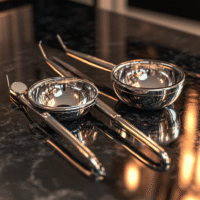Understanding the Study on Pleural Needle Biopsies
What Was the Study About?
This study looked at two types of needles used in ultrasound-guided pleural needle biopsies. These biopsies help doctors diagnose problems in the pleura, the lining around the lungs. The two needle types are:
- Abrams needle
- Cutting needle
The study aimed to find out which needle works better for different patients and to see how safe each method is.
What Did the Researchers Find?
1. Diagnostic Accuracy:
– The cutting needle had a lower success rate (63%) compared to the Abrams needle (79%).
– For patients with thick pleura (≥ 1 cm), both needles worked well, with the cutting needle being slightly better (93% accuracy vs. 89% for the Abrams needle).
2. Safety:
– There were some serious bleeding events (6.9%) with the cutting needle, but no deaths occurred during the study.
What Does This Mean for Patients and Clinics?
For patients with thick pleura (≥ 1 cm), the cutting needle is a good choice. For those with thinner pleura (< 1 cm) or no thickening, the Abrams needle is safer and more accurate. This gives doctors clear options based on patient conditions.
Real-World Opportunities
- Hospitals can adopt the Abrams needle as a safe alternative when the cutting needle isn’t available.
- Doctors can choose the right needle based on the thickness of the pleura, improving diagnosis rates.
Measurable Outcomes to Track
- Rate of successful diagnoses for each needle type.
- Incidence of major complications, like bleeding.
- Patient satisfaction with the procedure.
AI Tools to Consider
Clinics could explore AI tools that assist in imaging analysis to better determine pleural thickness and guide needle choice.
Step-by-Step Plan for Clinics
- Start Small: Begin using the Abrams needle for patients with thin pleura to assess safety and outcomes.
- Train Staff: Ensure all medical staff understand when to use each needle type based on the latest findings.
- Monitor Results: Keep track of diagnostic success and any complications.
- Expand Use: Gradually increase the use of both needle types based on patient needs and outcomes.
For more details, you can read the full research article here.































